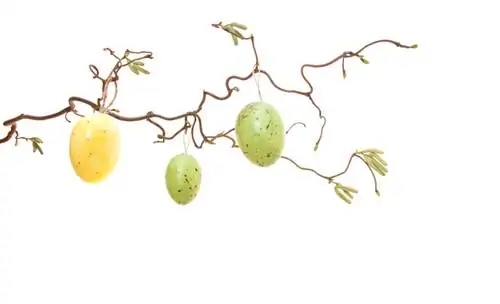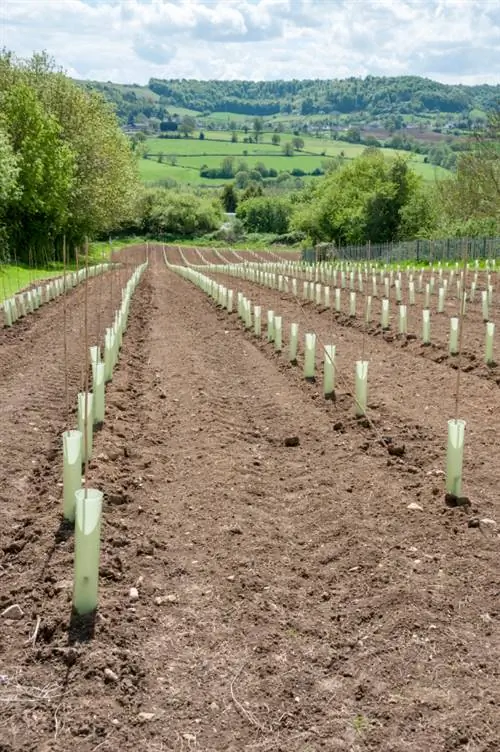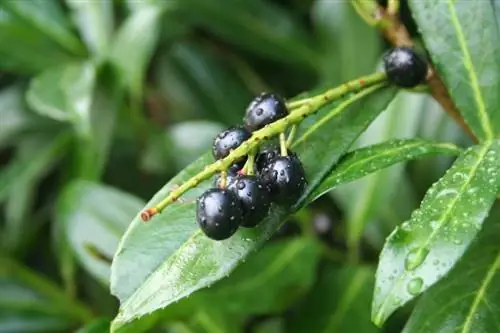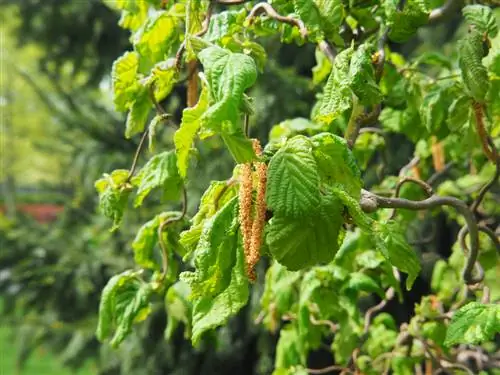- Author admin [email protected].
- Public 2023-12-16 16:46.
- Last modified 2025-06-01 06:02.
In conjunction with pruning, you have an abundance of the best plant material in your hands for propagation. Read here how cuttings and cuttings can be transformed into a vital corkscrew willow in no time.

How can the corkscrew willow be propagated?
The corkscrew willow can be propagated using cuttings in summer and cuttings in winter. Cuttings are cut from half-woody shoots and planted in potting soil, while fully woody branches can be rooted as cuttings in the ground or pots.
Instructions for summer cutting propagation
When the corkscrew willow is full of juice in summer, life pulsates right down to the shoot tips. This is the best time to grow new specimens of the picturesque ornamental shrub using cuttings. To do this, cut half-woody, non-flowering head shoots 20 cm long. Please place the scissors just below a leaf node and remove all leaves in the lower half. Proceed as follows:
- Medium-sized pots fill with potting soil (€6.00 on Amazon) or a mix of sand and potting soil
- Plant a cutting with the leafless part in it
- Water so generously that the water runs out of the bottom opening
In a partially shaded, airy location, keep the substrate constantly slightly moist. Now the offshoots of the corkscrew willow are demonstrating their remarkable vigor. Under ideal conditions, the cultivation pots are completely rooted by autumn, so that the young ornamental shrubs can be planted out in beds and containers.
Rooting in water - This is how it works
To experience the fascinating rooting process up close, you can place the cut cuttings in a glass or vase with water. To prevent rot, add a small piece of charcoal. On the bright, not full-sunny windowsill, the root strands sprout quickly and are visible to everyone. With a length of 5-8 cm, pot the rooted offshoots.
Instructions for winter cutting propagation
In contrast to cuttings, cuttings are completely woody branches. Cut these over the course of the winter so that there is a sleeping eye at each end. In order not to confuse the polarity when planting, make the lower cut at an angle and the upper cut straight.
In a protected location in the bed, place two thirds of the cuttings in the loose soil and water. A layer of leaves protects the offshoots from frost and constant moisture. Alternatively, place the branches in pots with peat sand and place them in a partially shaded, frost-free location.
Tip
While an adult corkscrew willow is completely hardy, this does not apply to young plants that have resulted from successful propagation. If you plant the Salix offspring in the bed in autumn, winter protection is therefore strongly recommended.






